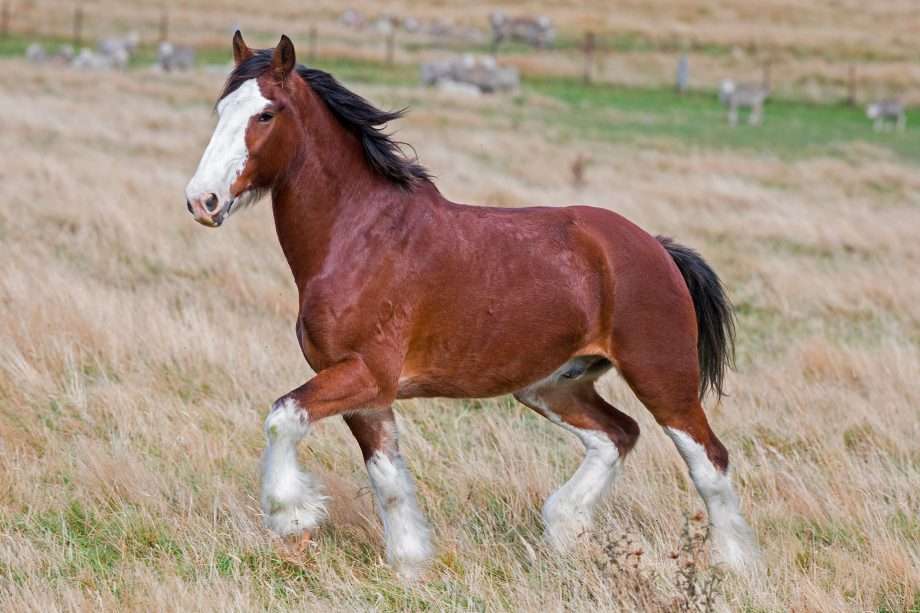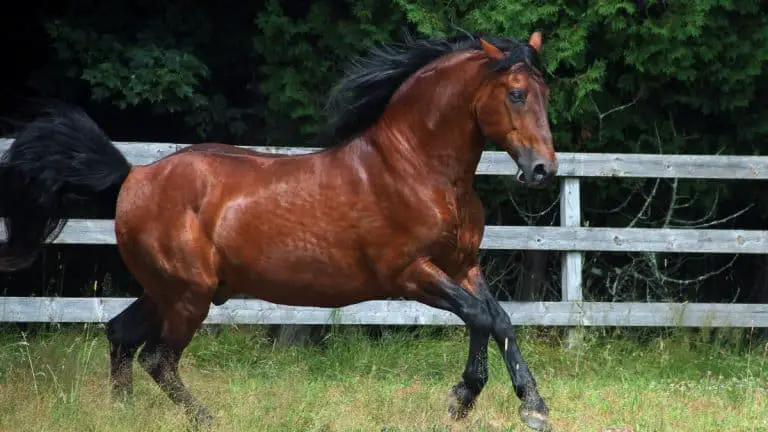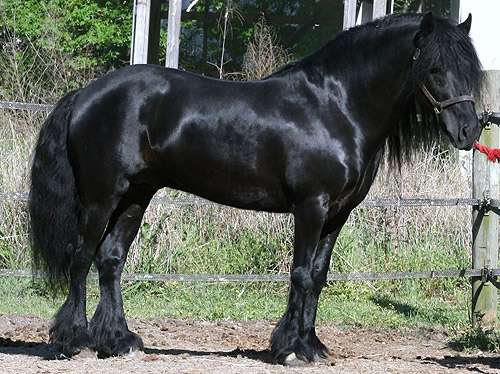
Size
1.6 – 1.8 m
Color
Although some may be gray, black, or roan, bay (a rich mahogany brown) and brown are the most popular Clydesdale hues (bay with some white hairs). This breed is characterized by white markings on the face, legs, and occasionally the torso.
Physical Attributes
A Clydesdale should have an attractive open forehead that is broad between the eyes, a flat (not Roman-nosed or “dished”) profile, a wide mouth, huge nostrils, a bright, clear, intelligent eye, a big ear, and a well-arched long neck that springs from an oblique shoulder with high withers.
Characteristics and Genetics
A type of draught horse native to Scotland is called a Clydesdale. The Clydesdale or valley of the river Clyde, a large portion of which is located within the county of Lanarkshire, is where it gets its name.
The Flemish stallions that were brought to Scotland in the eighteenth century and mated with Scottish mares are the breed’s ancestors. Shire blood was added in the nineteenth century. The term “Clydesdale” was originally used to describe the breed in 1826, when the horses had already spread throughout much of Scotland and into northern England. Thousands of Clydesdales were sold to numerous nations when the breed association was established in 1877, but especially to Australia and New Zealand. Early in the 20th century, numbers started to decline as a result of both the growing mechanization of agriculture and the removal of many for use in the First World War.
Although it is no longer as heavy as it once was, the horse is still big and powerful. Historically, it was employed for draught power in both agricultural and road hauling. Its main purpose presently is as a carriage horse. It can be driven or ridden in parades or processions. The Household Cavalry has used some of them as drum horses, while in the US, the Anheuser-Busch brewery utilizes a matched team of eight for publicity.
Care as a Pet
Similar to horses of other breeds, these animals thrive in herds and have a gregarious character. They require expansive pastures with an abundance of grass to eat, and individuals should also add grain and hay to their diet to round out their nutrition. An individual must also make sure that everyone has constant access to clean water and some kind of shelter.
Their maintenance is a little different from that of a typical horse because of their big size. Their increased heft must be reflected in the housing and food requirements.

Clydesdale’s diet
Like all horses, this breed prefers to eat plants. It therefore only consumes plants and avoids eating other animals. They mostly eat grasses as food. Grain supplements are also given to domestic horses, though. Barley, soybeans, alfalfa, oats, timothy hay, corn, flax, wheat, clover, and other foods are included in their diet.
Human-Clydesdale Interaction
By mating the smaller indigenous domestic horses with imported Flemish stallions, people have developed this breed. Horses that were ideal for agriculture and larger than the native mares were produced as a result. These horses have a long history of being employed for a variety of jobs, such as pulling plows, lugging large loads, drawing passenger carriages, and for entertainment.
Behavior
Because of its steadiness and composure, this breed is dependable when pulling carts and pulling carriages. It is not readily startled and is quite amiable. Because of this, many people value this breed as a trail horse.
Grooming
Clydesdales demand additional grooming attention. For starters, just because of their size, grooming takes longer. Additionally, the feathering on their legs needs to be thoroughly dried after each shampooing in order to avoid skin irritation. Clydesdales also require larger
Table





